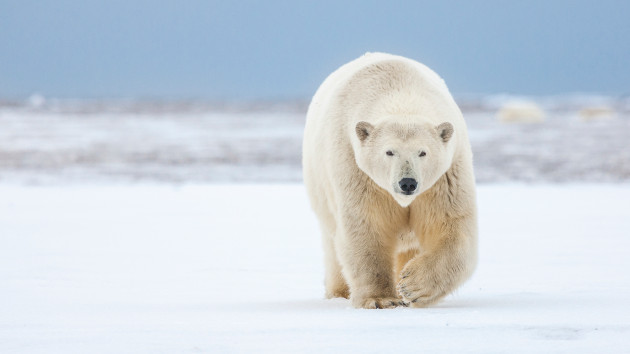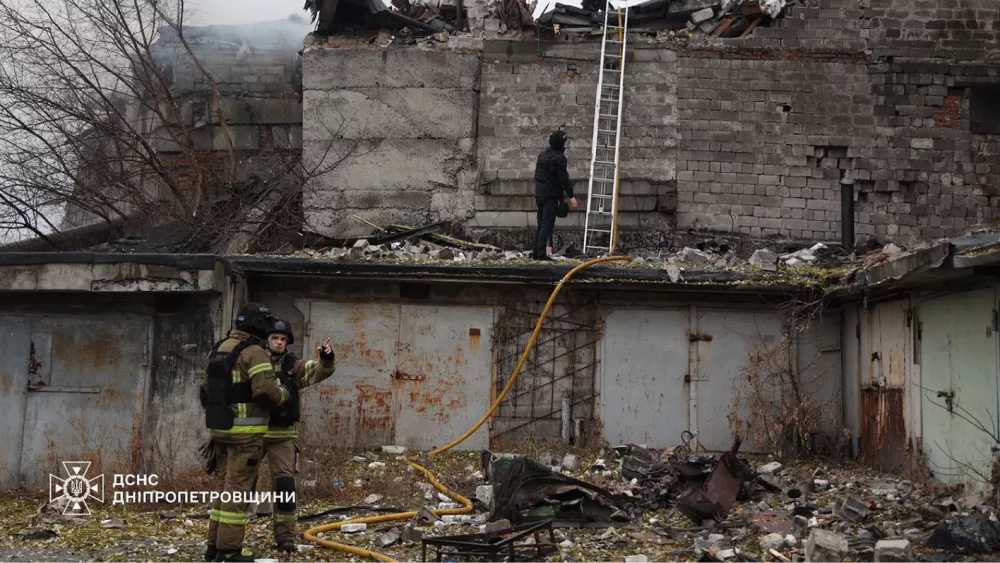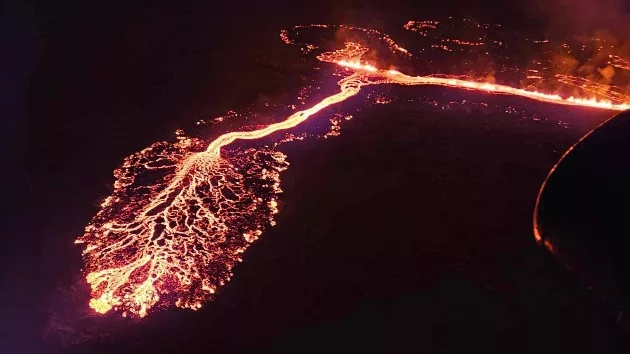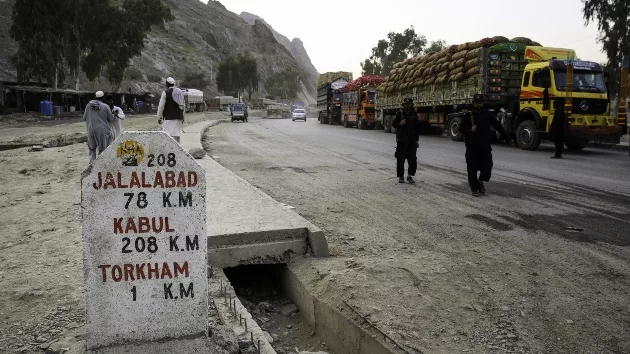
As scientists anticipate another unintended consequence of climate change that could pose a threat to both humans and wildlife, they are finding ways to use technology to combat those threats.
Global warming continues to trigger the mass melting of Arctic sea ice, causing polar bears to begin gravitating toward land, scientists from Polar Bears International told ABC News. Sometimes, the closest land just happens to be populated by people, increasing the likelihood of encounters between man and beast.
The polar bears near Churchill, Manitoba — a town in central Canada along the Hudson Bay considered to be the polar bear capital of the world — are the world’s most studied sub population, simply due to researchers ability to access them, Steven Armstrup, chief scientist at Polar Bears International, told ABC News. Researchers are able to gather information about the species from land, rather than following them out into the sea ice — a “logistically much more difficult task,” Armstrup said.
Because of the polar bears proximity to town, often nicknamed “the accessible Arctic,” encounters with humans, or the bears’ tendency to wander into town, is not unheard of, B.J. Kirschhoffer, director of conservation technology at Polar Bears International, told ABC News. The Hudson Bay serves as a “polar bear highway,” as the bears await the water to freeze so they can make their annual migration on the ice, he added. But the ice has yet to freeze.
“All around Hudson Bay, there’s people that have lived here for a long, long time,” he said. “And the more time that bears spend on land, the more chance they have to interact with people.”
As the bears spend more time on land, they are likely to be warmer than usual and looking for food, Armstrup said. When they wander into communities like Churchill, they are more likely to have negative interactions with people, simply because they are so uncomfortable.
In these cases, the bears, listed as a vulnerable species on the International Union for Conservation of Nature’s Red List of Threatened Species, are sometimes put into “polar bear jail,” chased away and often shot, Armstrup said.
“If we want to have as many bears as possible until we stabilize the ice, we want to avoid that,” he said.
Throughout years, Churchill has seen more than 180 incursions, providing “a lot of opportunities for something to go wrong,” he said. In order to protect both polar bears and people, researchers have begun testing remote sensing technologies as an early warning system for communities to detect polar bears coming into town, Kirschhoffer said.
“The idea is that they could look out 24 hours a day, seven days a week, through whatever is happening in the air for like snow, whatever happening for daylight, whether it’s dark or light, and kind of keep a watch over the community for movement out there and provide people with a little bit more time to make decisions if it happens to be a polar bear that is approaching their community,” he said.
The ground system is designed to minimize the opportunities for humans and bears to interact with each other at close range. Visually, humans may not be able to see them coming in, perhaps due to a blizzard, but the radar system will catch their movements, Armstrup said.
When the polar bears are driven toward land and humans, it gives scientists even more of a glimpse into how they are faring, Amstrup said.
“The deterioration of the sea ice just gives us that much more of a window that we otherwise would not have had,” he said.
Churchill is located in central Canada, right along the coast of the Hudson Bay. There, a “polar bear highway” opens up each year, Amstrup said.
This population of polar bears is likely one of the firsts expected to disappear, should the conditions to their habitat worsen, according to Polar Bears International. The population has declined by more than 30% since the 1980s, and the bears themselves have also gotten smaller, according to the researchers.
“These bears are also some of the most southerly bears on the planet,” Kirschhoffer said. “And so you would expect if there’s going to be changes [to the population] from climate that we would see them here first.”
Scientists don’t see any evidence that the decline won’t continue over time, Armstrup said, adding that they are witnessing the sea ice break up sooner in the springtime and summertime, and not re-forming until much later in the fall. The availability of sea ice is about a month shorter than it was about 30 years ago.
“That means that polar bears are spending more time on land, where they don’t have anything to eat, and less time out on the ice, where they can catch the seals that are their preferred prey,” he said.
Armstrup also added that these changes are evident in both distribution and the number of bears within the population.
Researchers are also using technology to help ensure the survival of polar bear cubs, which is paramount to the survival of the species.
Polar Bears International, along with research partners at Simon Frasier University, Artemis Inc. and Brigham Young University, have been testing Synthetic Aperture Radar, as a potential tool to locate polar bear dens.
Every year during the fall, polar bear mothers create a cave underneath the surface or within drifted snow. Many times those dens, which scientists consider almost an extension of the womb, can be destroyed by humans falling into them or they can be crushed by heavy equipment amid industrialization, Amstrup said.
The SAR tool is a small antenna that sits outside an aircraft while it flies over a landscape and uses frequencies to pinpoint where the dens are located underneath the snow, Kirschhoffer said.
If researchers can map out the dens, they can help protect those areas during the months that the mothers and cubs are at their most vulnerable, Kirschhoffer said.
The precarious fate of the species is already apparent to those who have been researching them for decades. In decades past, researchers would frequently see mother polar bears with her cubs or yearlings, but they are seeing them less and less, Armstrup said.
The conservation of polar bears is nearly impossible without finding a way to keep the sea ice from melting, according to the scientists.
With dwindling sea ice, there is less opportunity for polar bears to fatten up in preparation for the annual fast, leaving them food-deprived for longer periods of time. Additionally, if the mothers are unable to sustain the energy to nurse her cubs, the cubs become less likely to survive.
Also, the underside of the sea ice also has its own ecosystem that contains algae, fungi and small shrimp-like creatures that feed the fish that seals eat, further disrupting the food chain in the Arctic, Armstrup said.
“Anytime human activity results in the loss of a species, it’s got to be considered a significant loss, because that’s one more component of the ecosystem that we actually share with the polar bear and with other creatures,” he said.
Copyright © 2022, ABC Audio. All rights reserved.








